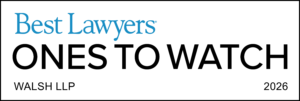
Condominiums in Alberta are subject to a variety of bylaws, rules and regulations. Although each contributes to the operation of a condominium, they have separate functions and distinct legal ramifications. It is essential for both condominium owners and board members to be aware of the distinctions between rules and regulations and also condominium bylaws.
Bylaws are created pursuant to the Condominium Property Act (Alberta) (the “CPA”) and its Regulation. Bylaws are formal, legally binding documents of a condominium corporation that provide a breakdown of its governance and operations. They address a wide range of topics, including unit owners’ responsibilities, common area maintenance, and the duties of the board of directors. Bylaws must also be registered with the Alberta Land Titles Office to be enforceable. Any changes made to the bylaws require a special resolution, meaning the change must be approved by a large majority of the unit owners, usually requiring at least 75 percent of the owners’ approval.
Bylaws typically address the following areas:
- Board of Directors: election, duties, and powers of the board of directors;
- Meetings: procedures for calling and conducting meetings;
- Financial: reserve funds and financial reporting requirements;
- Maintenance and Repairs: responsibilities for maintaining and repairing common property and individual condominium units;
- Use of Units: permitted and non permitted use of units; and
- Enforcement: methods for enforcing compliance.
On the other hand, condominium rules and regulations are more flexible guidelines established by the condominium board to manage the day-to-day living conditions and the use of the common property. Condominium rules and regulations complement the bylaws by addressing specific issues that arise in the daily management of the condominium.
Rules and regulations are created and amended by the condominium board, rather than pursuant to the CPA like bylaws. Unlike bylaws, condominium rules are not required to be registered with the Alberta Land Titles Office and can be amended by a simple majority vote of the condominium board members.
Rules and regulations often cover practical and specific matters, such as:
- Common Areas: guidelines for using amenities like the gym, pool, etc.;
- Noise: providing time frame for quiet hours;.
- Pets: policies on pets (types and sizes of pets permitted); and
- Security: methods to ensure the safety and security of residents, such as key access to common areas.
It is important to know that bylaws are formal and legally binding documents that require registration and a special resolution to amend, while rules and regulations are less formal and can be amended by the board at any time. Whether you are purchasing a condominium or joining your building’s board of directors, you should remember that bylaws cover governance issues, fundamental responsibilities, financials, etc., and that rules and regulations address day-to-day use and enjoyment of the property. Further, bylaws can be enforced through fines and legal action, while violations of rules and regulations are enforced through warnings, loss of privileges, and other non-monetary enforcement methods.
Usama Rashid is available to discuss the importance of understanding your condominium bylaws, rules or regulations. Whether you already are or are going to be a condominium owner or board member, please contact Usama Rashid at urashid@walshlaw.ca to have our office review your condominium documentation.









